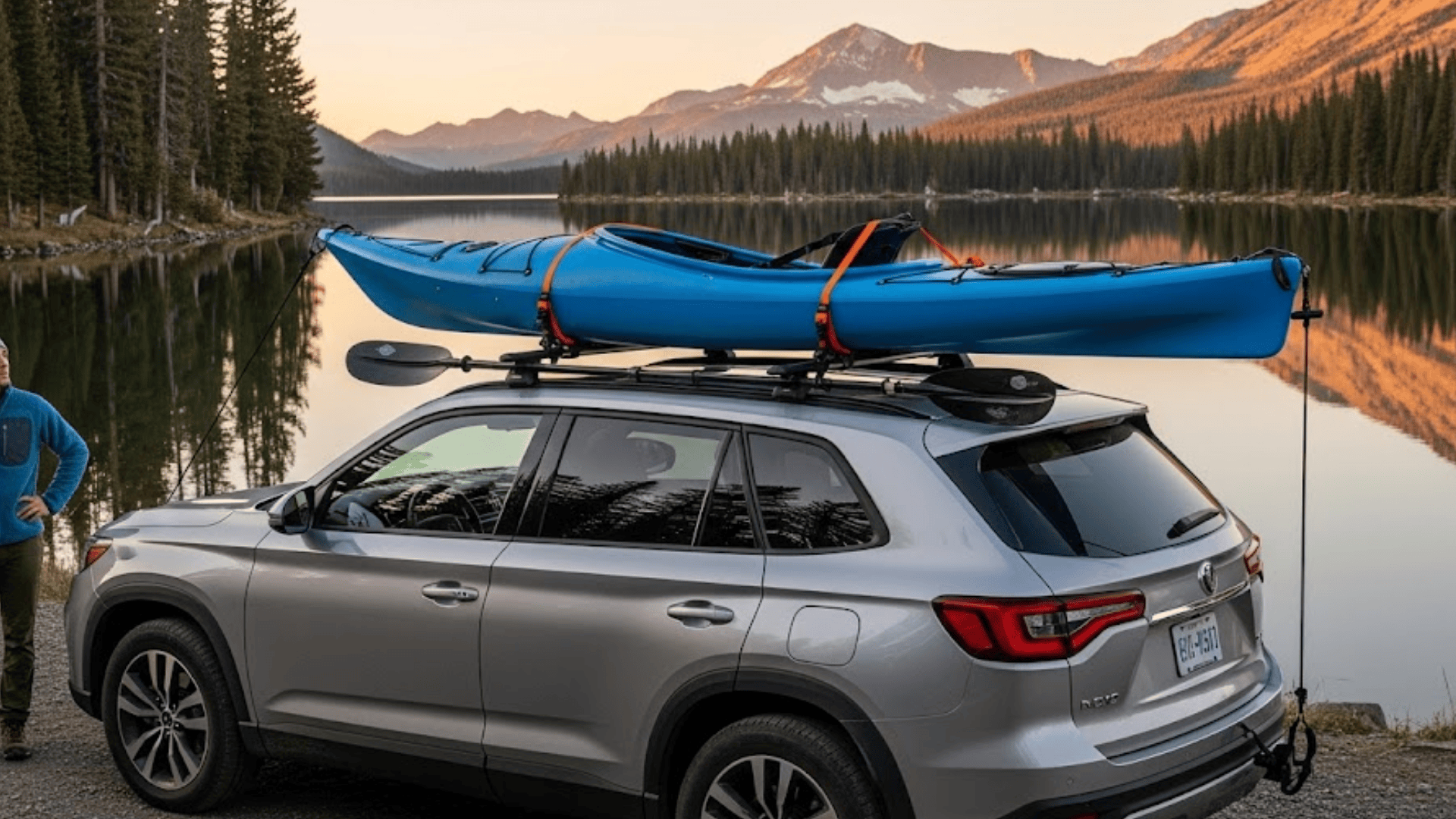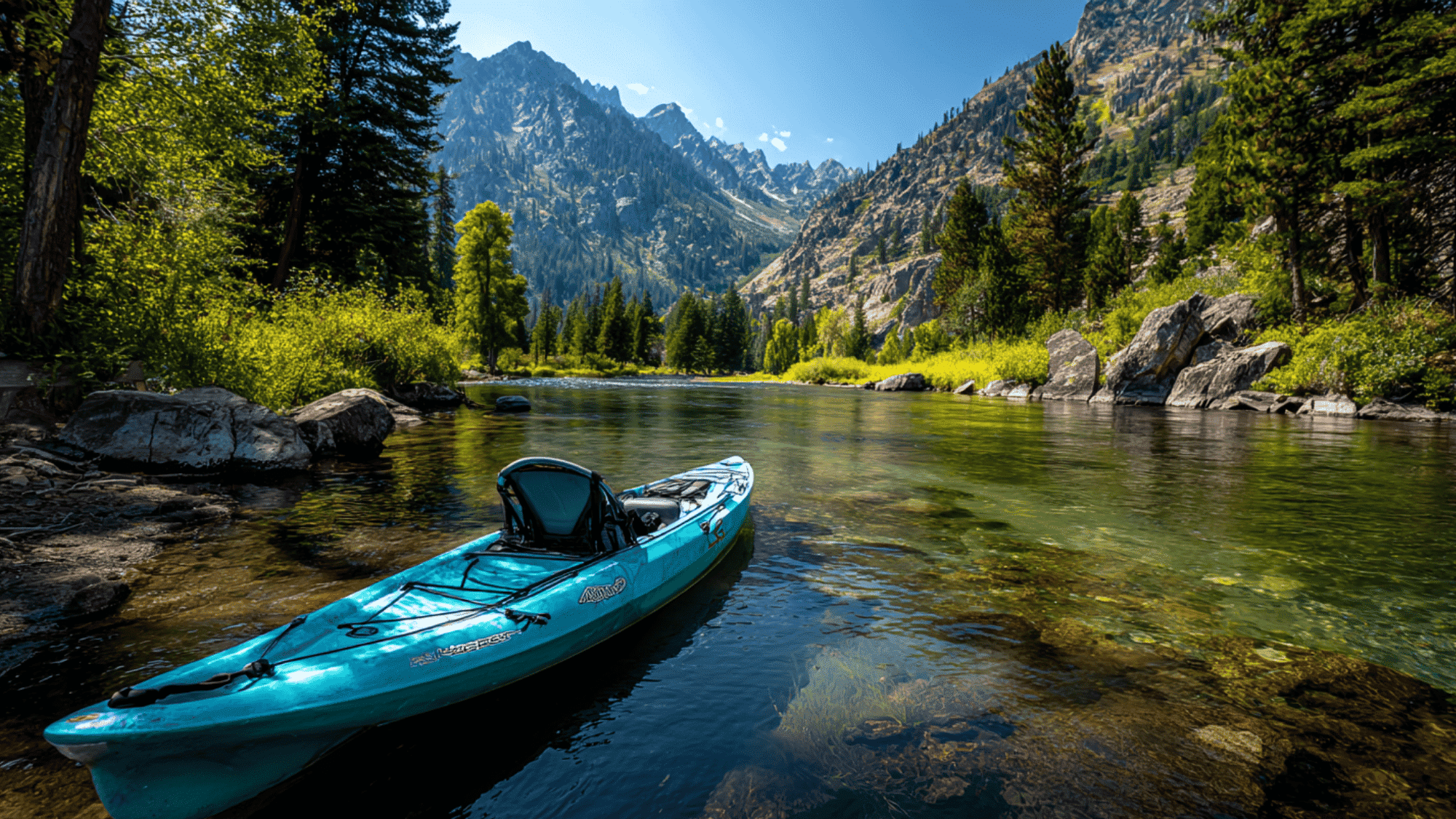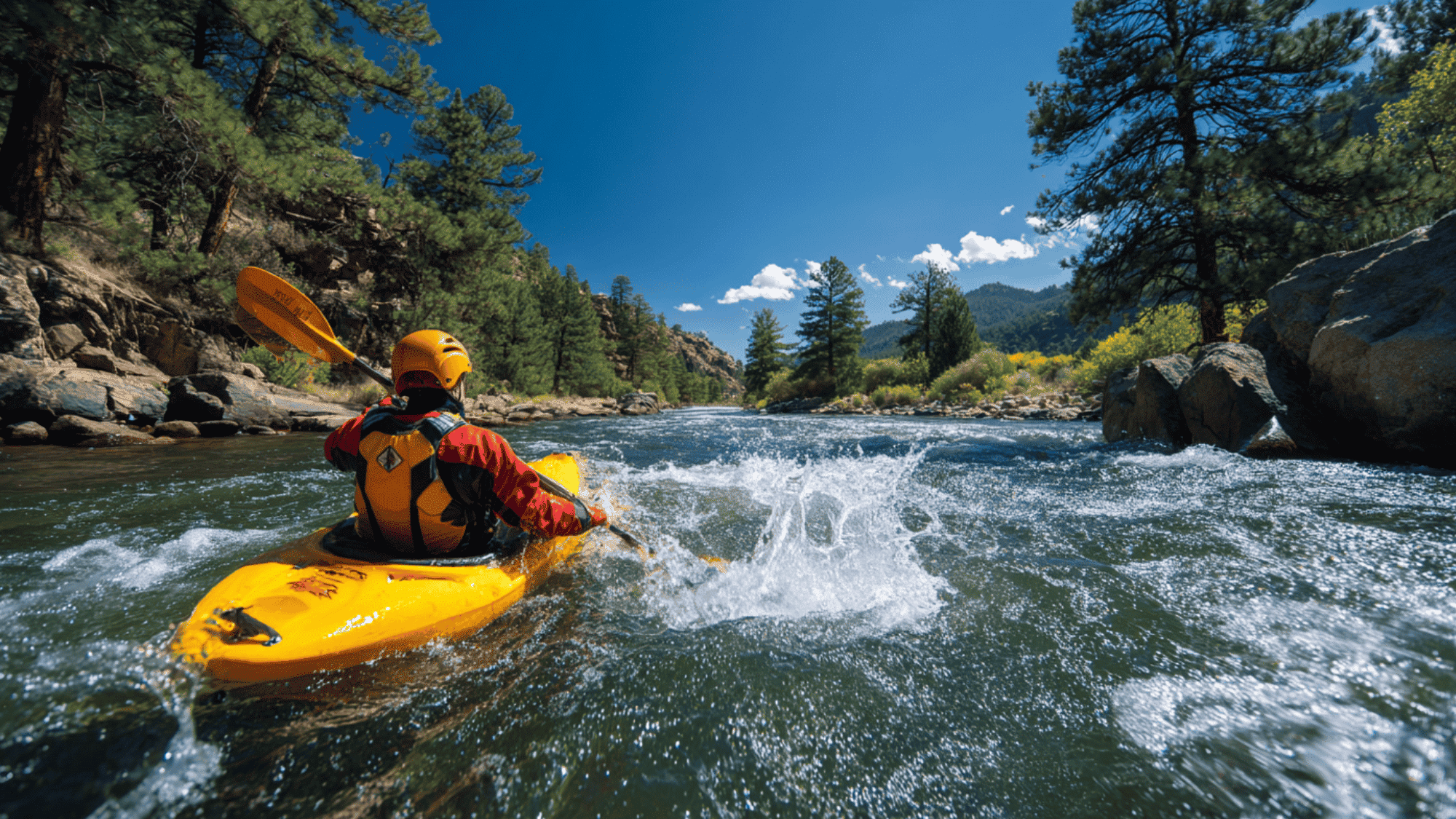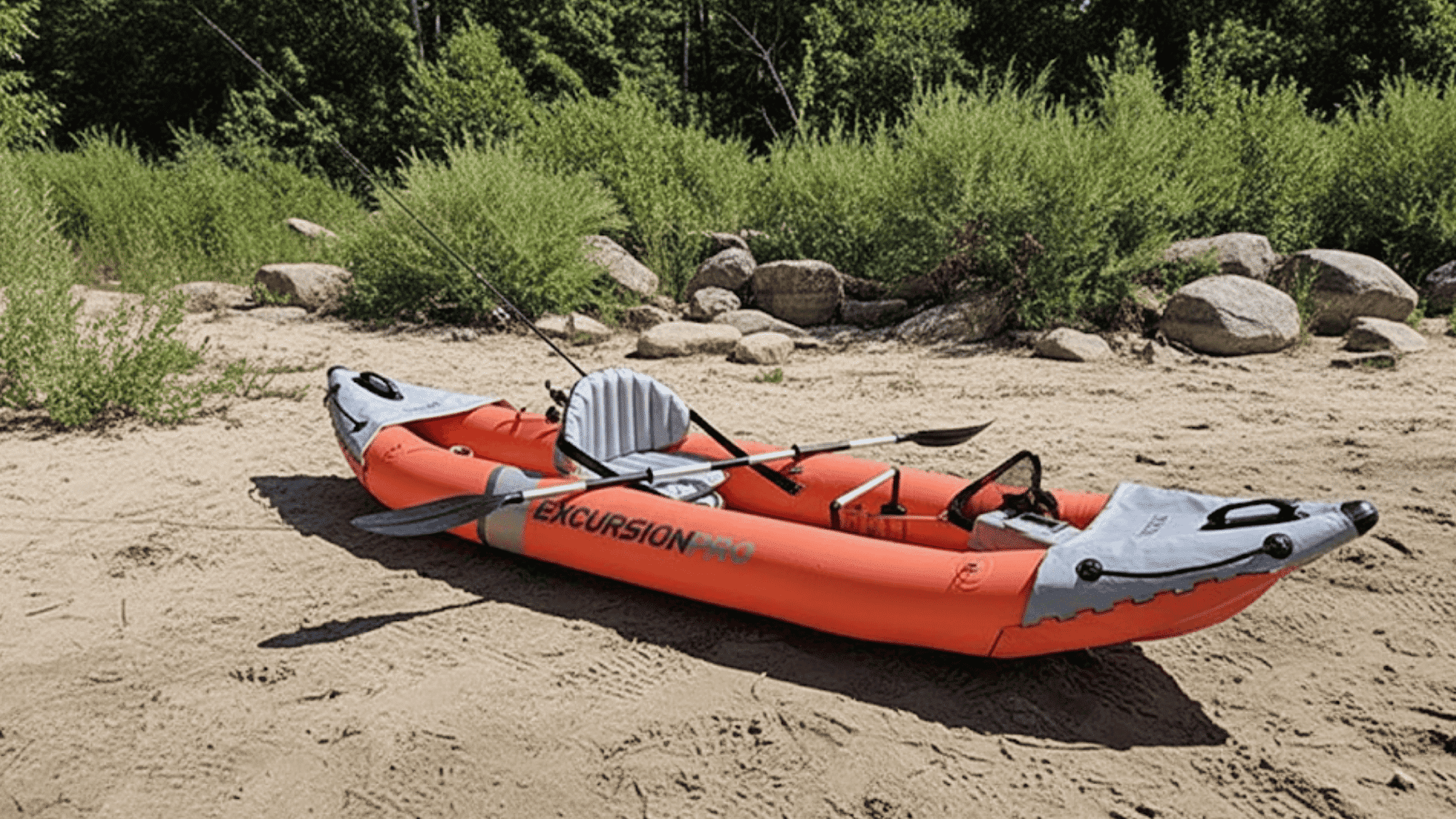Looking at your kayak beside your car can make transport seem like a puzzle.
The size, weight, and awkward shape of a kayak often leave even seasoned paddlers second-guessing how to get it to the water.
But moving your kayak doesn’t have to be complicated or expensive.
Even if you drive a compact car, SUV, or truck, there are simple, reliable methods to make loading, securing, and unloading easy.
From roof racks and foam blocks to clever DIY tricks, you can find an option that fits your vehicle and budget.
With the right approach, transporting your kayak becomes just another smooth step in your fable.
Why Proper Kayak Transport Matters
Kayaks aren’t exactly small, and if they’re not secured properly, they can shift, slide, or even fly off your vehicle while driving, endangering your boat, your car, and everyone else on the road.
Many states also enforce laws for oversized loads, so if your kayak extends too far without a warning flag, you could face fines.
Proper strapping not only prevents accidents but also protects your vehicle from scratches and your kayak from damage.
Once you learn the right technique, loading becomes second nature, giving you confidence that everything is safe, secure, and road-ready.
Standard Methods for Transportation
Traditional methods remain the most reliable. These setups are designed for stability, security, and long-term use, making them popular among frequent paddlers.
1. Roof Rack Systems
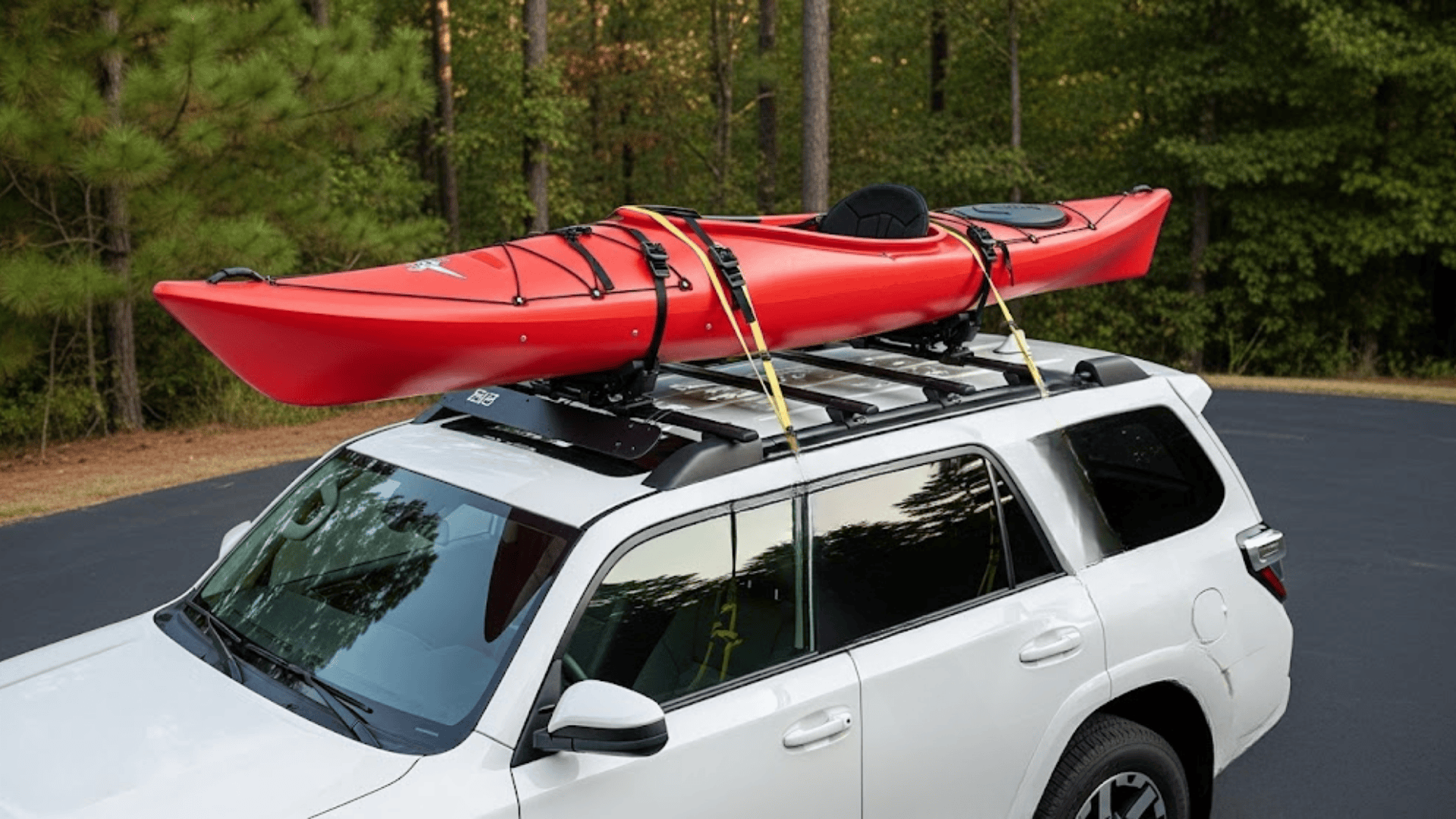
Roof rack systems are the most common choice for transportation.
They keep your boat secure, balanced, and safe on the road. This method is ideal for frequent paddlers seeking a dependable, long-term transportation option.
Steps:
- Lift the kayak onto your car’s roof rack carefully.
- Place it in the center for weight balance.
- Use cam straps to secure it tightly.
- Attach bow and stern lines for stability.
- Double-check every strap before driving.
2. Using Trailers
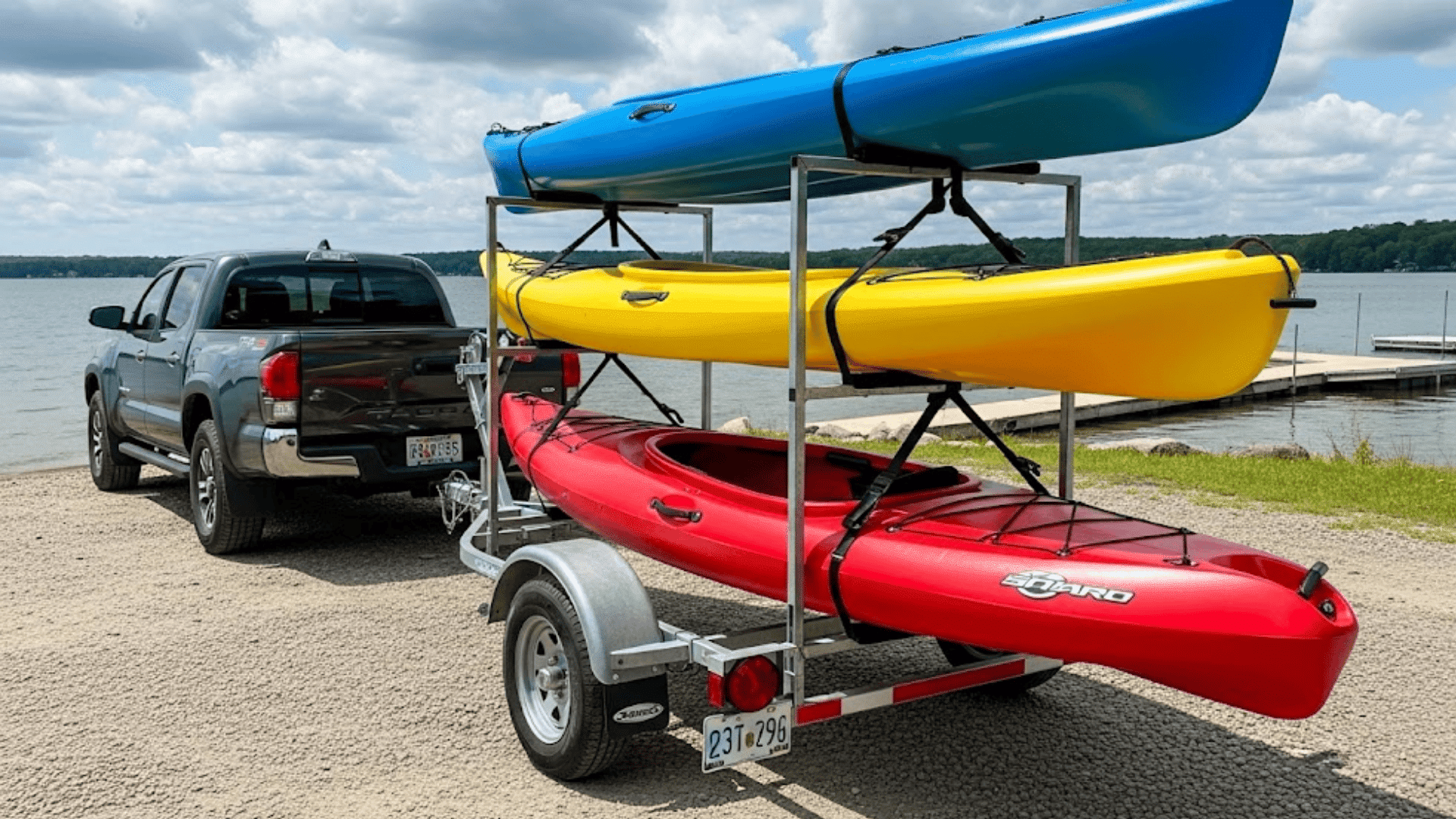
Trailers make it much easier, especially when carrying multiple boats or heavy fishing kayaks.
With low loading height and stable towing, trailers provide convenience and safety, making them an excellent choice for families, groups, and serious paddlers traveling often.
Steps:
- Attach the trailer securely to your tow hitch.
- Place kayaks evenly across the trailer bed.
- Use straps to secure each kayak firmly.
- Attach trailer lights and reflectors for safety.
- Inspect tires, hitch, and straps before leaving.
3. Pickup Truck Bed
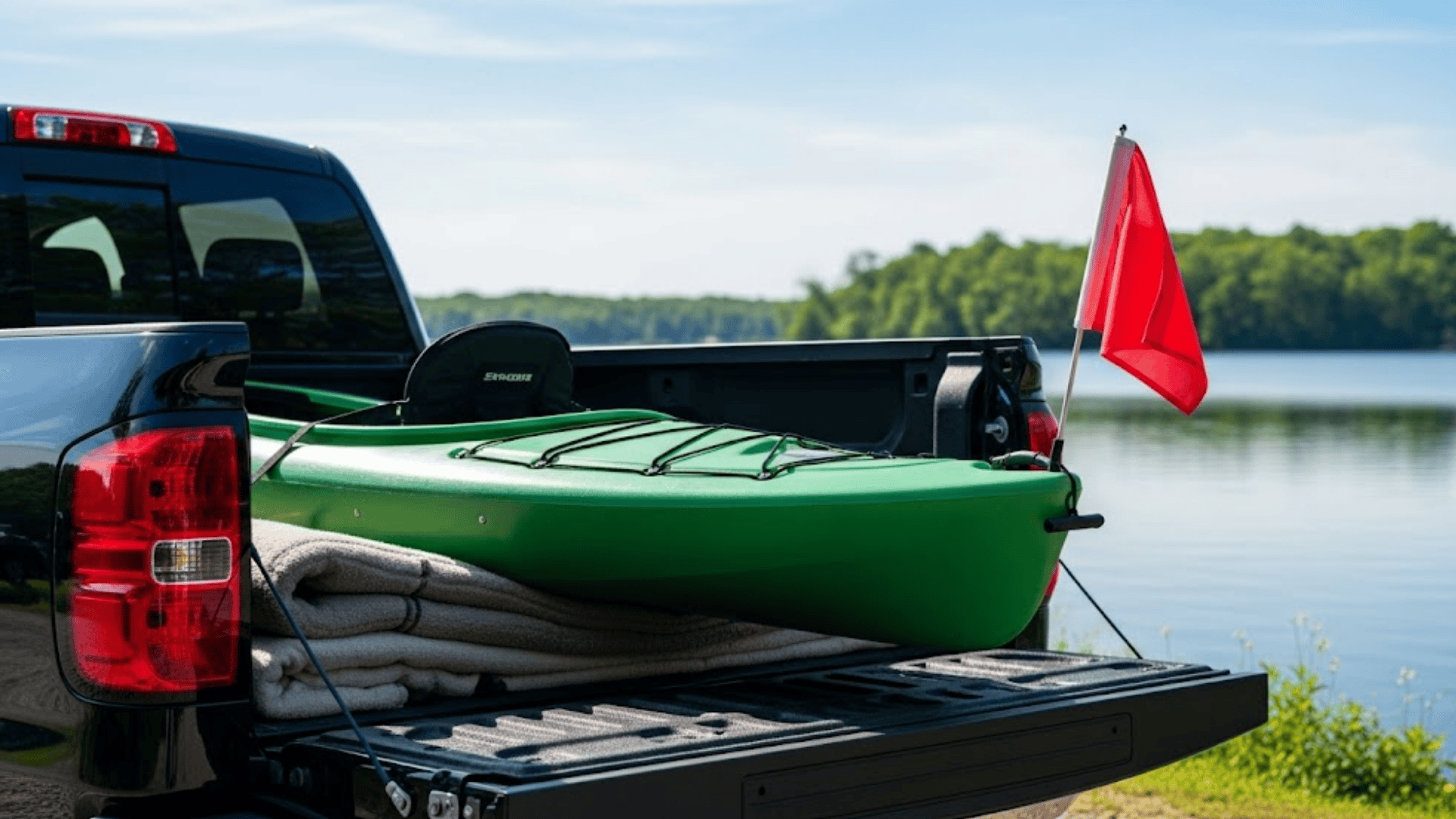
If you own a truck, the bed offers one of the simplest ways to transport a kayak. Just slide it in, secure it with straps, and use padding.
Truck beds are cost-effective, quick, and convenient for short or medium-distance kayak trips.
Steps:
- Place padding or blankets inside the truck bed.
- Slide the kayak into position, tailgate lowered.
- Strap the kayak to the anchor points in the bed.
- Attach a red flag if it extends outward.
- Use a bed extender for long kayaks.
Transporting a Kayak Without a Roof Rack
Not every car has a roof rack. Thankfully, there are practical and affordable methods for this without permanent installations.
1. Pool Noodle Method
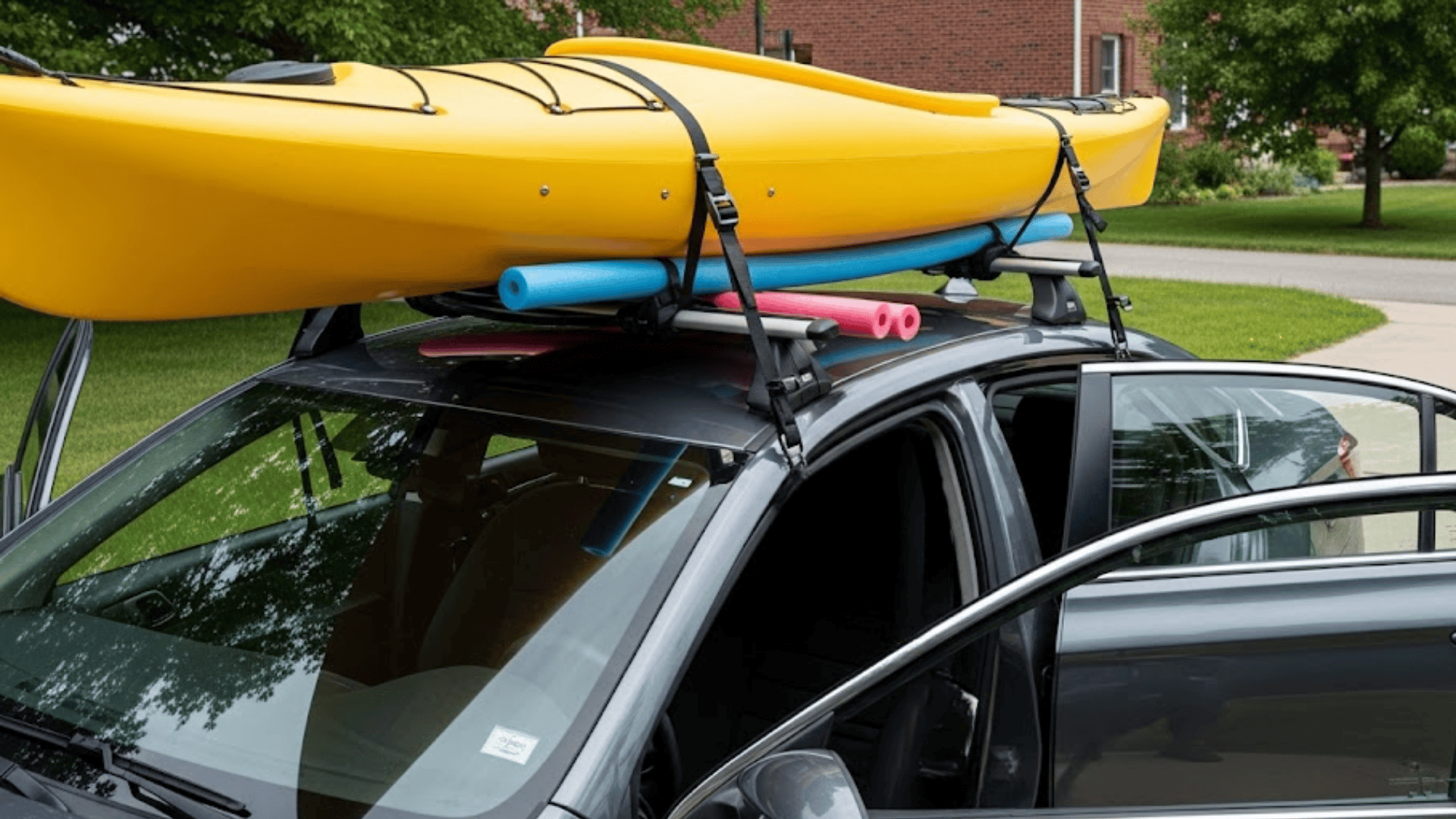
The pool noodle method is a creative, budget-friendly hack.
Using pool noodles as roof padding with straps, you can secure your kayak safely. It’s affordable, simple, and perfect for beginners or occasional paddlers who don’t own racks.
Steps:
- Place three pool noodles evenly across your car’s roof.
- Rest the kayak hull-down on top.
- Run straps through your car doors.
- Tighten straps until secure but not crushing.
- Stop after 15 minutes to recheck.
2. Foam Blocks or Soft Racks
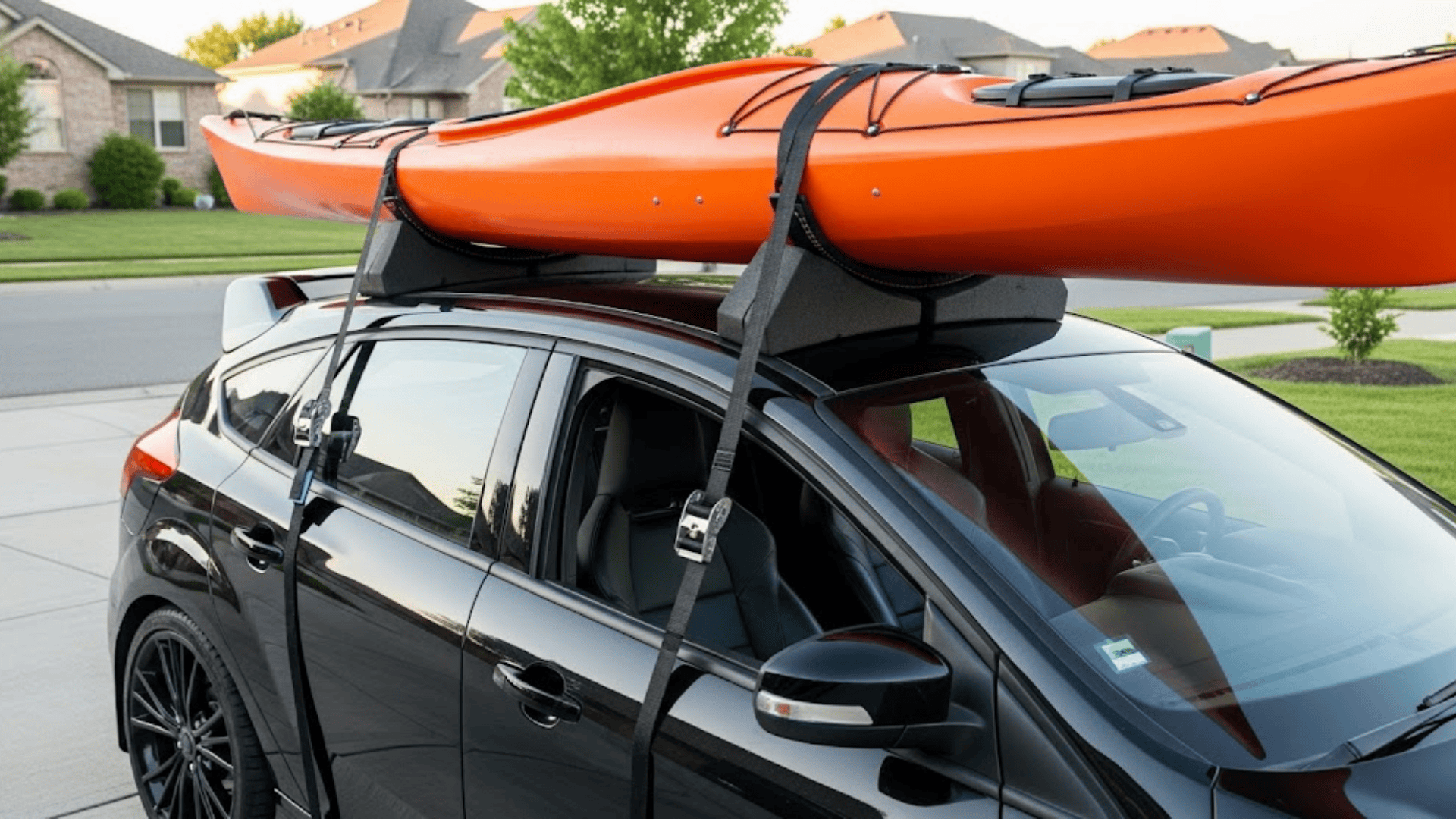
Foam blocks and soft racks make this easy without permanent roof racks. They’re sturdier than pool noodles, reusable, and specifically designed for kayaks.
This method provides balance, safety, and peace of mind while staying affordable for casual or seasonal paddlers.
Steps:
- Place foam blocks or soft rack pads on the roof.
- Position the kayak carefully on top of the padding.
- Run straps over the kayak and through the car interior.
- Tighten evenly for balance.
- Add bow and stern lines.
3. Inside the Vehicle
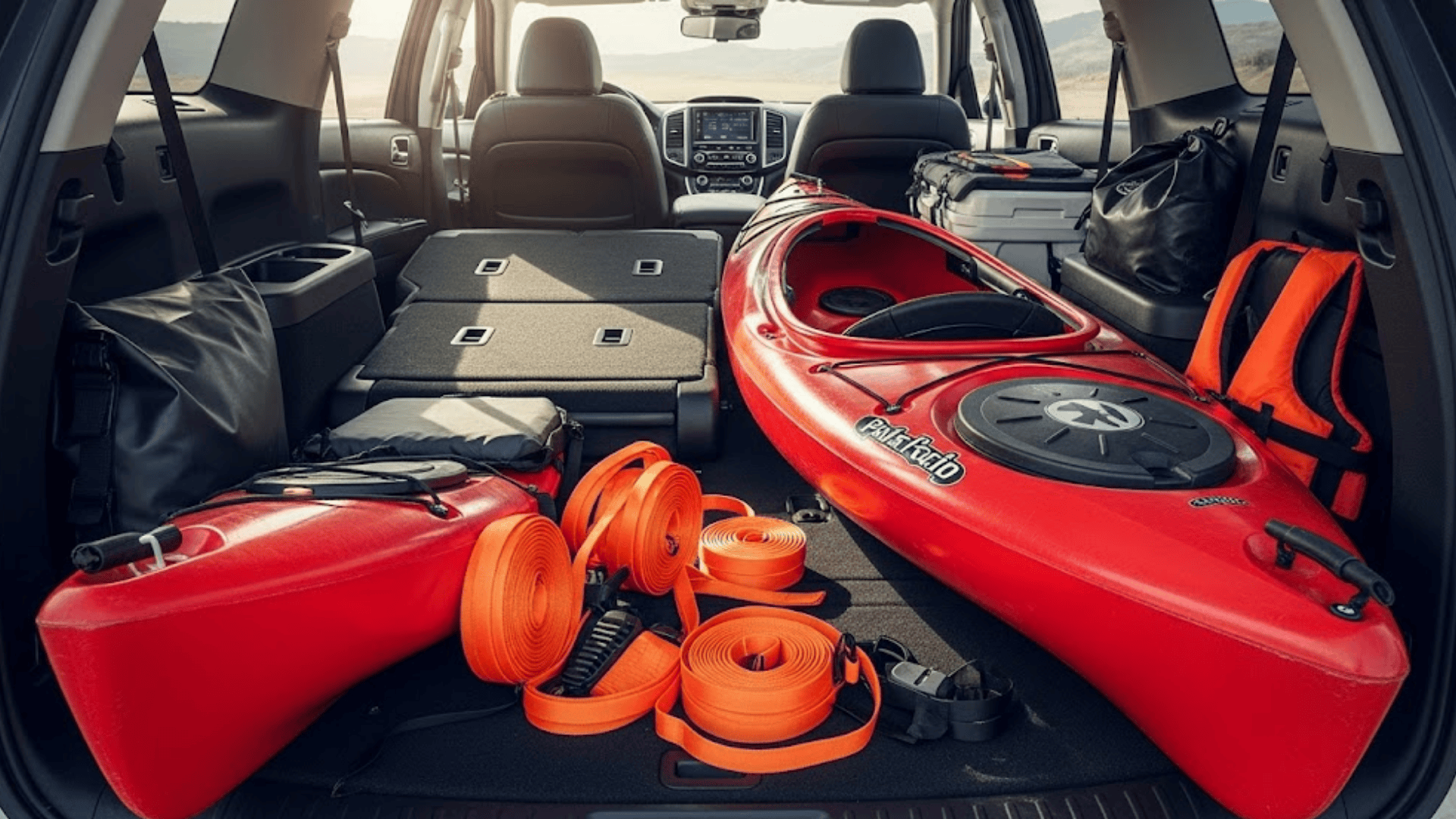
For shorter kayaks, folding kayaks, or inflatables, inside-the-car loading offers compactness.
With fold-down seats and padding, your kayak can fit securely inside. This option is ideal for city drivers or anyone with limited storage or no roof racks.
Steps:
- Fold down rear seats to create space.
- Place a blanket or padding inside the car.
- Carefully slide the kayak into the trunk area.
- Secure the kayak with straps or bungees.
- Ensure it doesn’t block rear visibility.
4. Alternative Kayak Designs
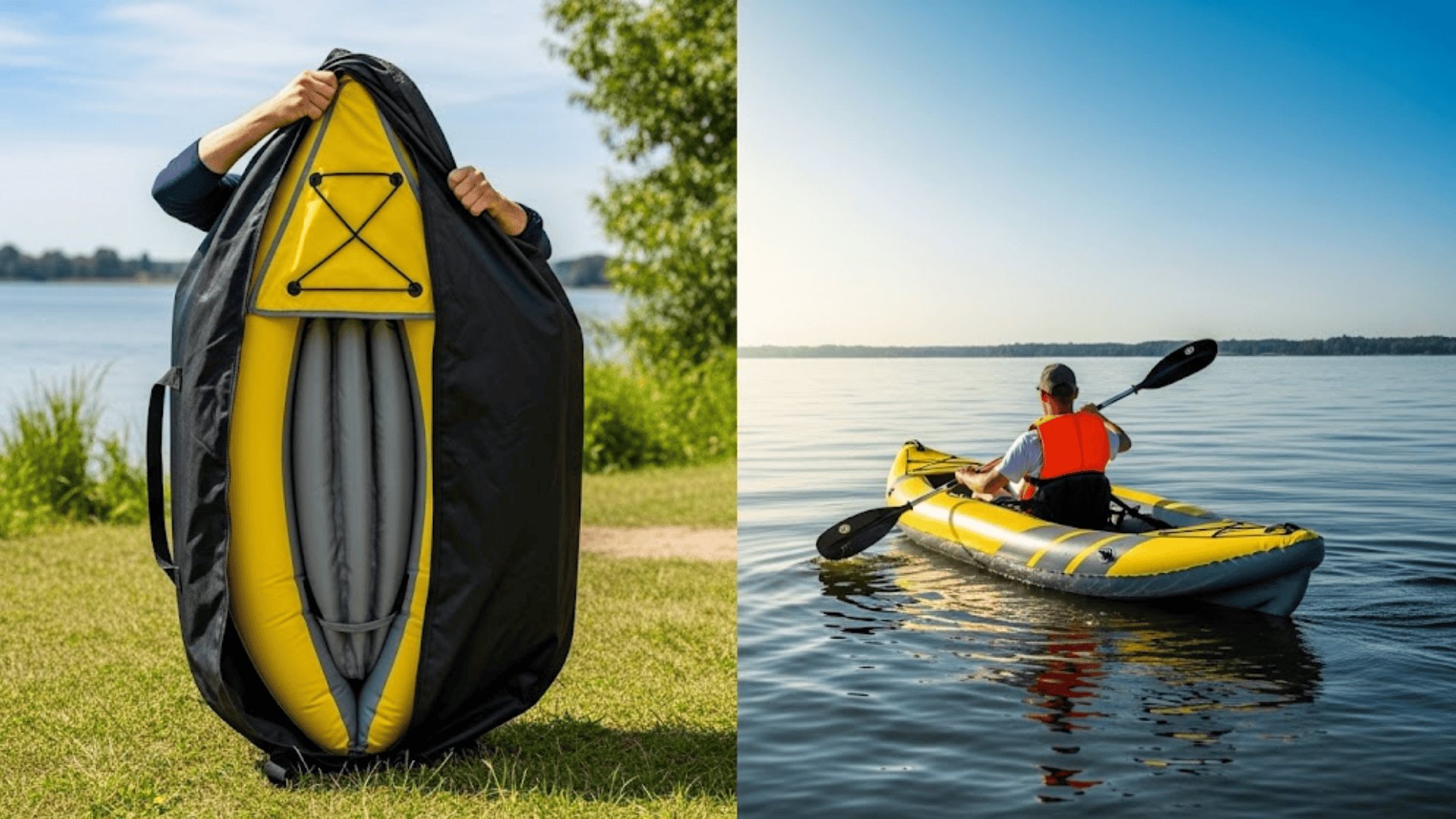
Not every kayak is bulky. Inflatable and foldable models make a simple task.
These lightweight boats fit in car trunks, closets, or backpacks, making them perfect for apartment dwellers, travelers, and anyone with smaller vehicles.
Steps:
- Choose an inflatable or foldable kayak.
- Pack the kayak into the carrying bag or case.
- Store inside your trunk or backseat.
- Carry easily with straps or a backpack-style design.
- Inflate or unfold in the water.
Cost Comparison of Methods
When choosing how to move your boat, costs vary. Each method has its unique pros, cons, and best use cases.
| Method | Cost | Pros | Cons | Best For |
|---|---|---|---|---|
| Roof Rack | $150–500 | Reliable, secure | Install required | Frequent kayakers |
| Trailer | $500–2000 | Easy loading | Expensive | Families, groups |
| Truck Bed | Free with the truck | Convenient | Needs padding, flag | Truck owners |
| Pool Noodles | $30 | Cheap, simple | Temporary | Beginners |
| Foam Blocks | $50–150 | Stable, portable | Less durable | Casual users |
| Inflatable Kayak | $300–1000 | No rack needed | Less performance | City paddlers |
Knowing costs ensures smarter decisions about transportation, helping paddlers choose the safest, most affordable, and convenient option for every trip.
Weather and Road Safety in Kayak Transport
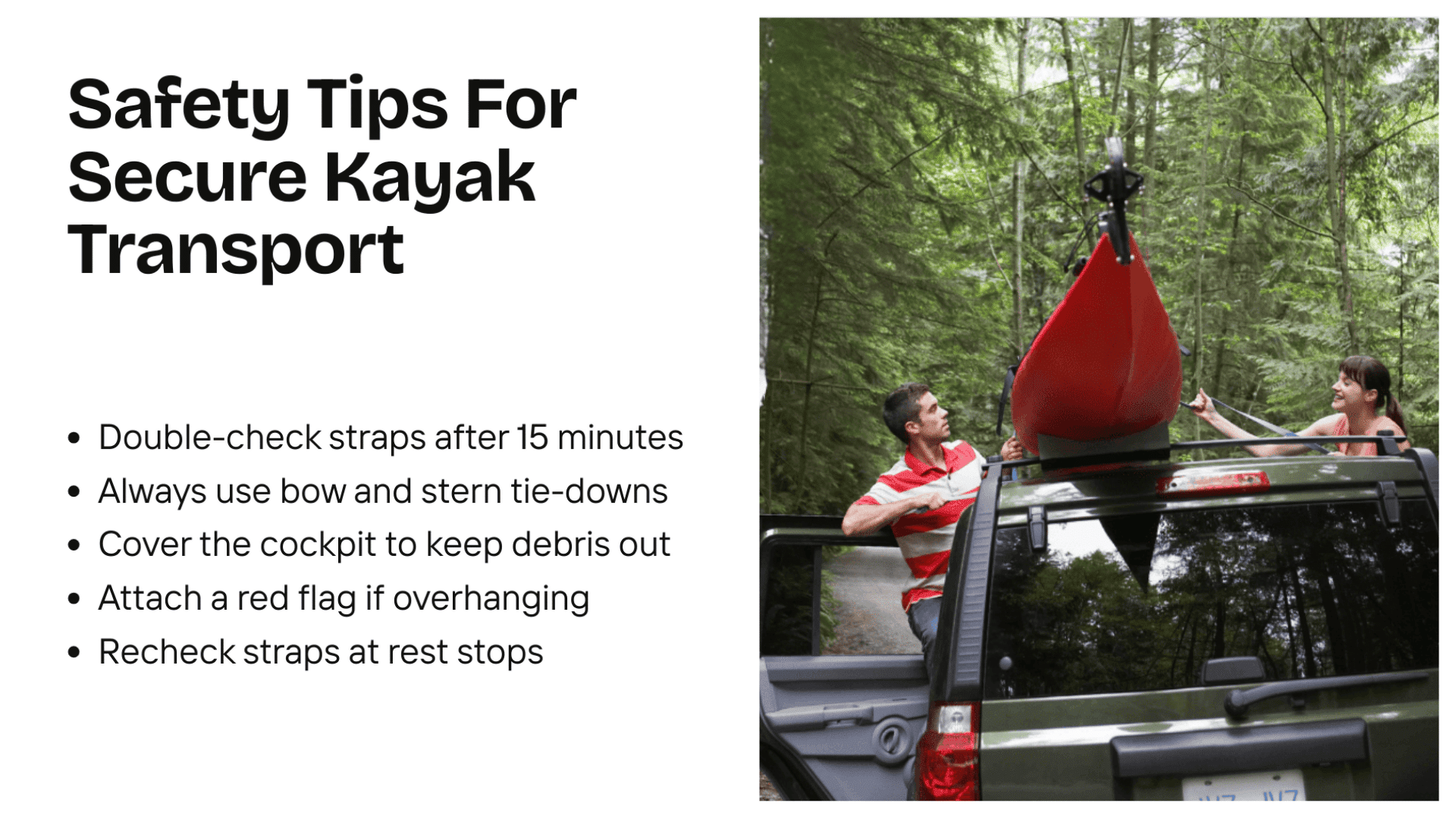
Weather plays a big role. Strong winds, heavy rain, or extreme heat can affect the security of your boat on the road.
Always prepare before driving by adding bow and stern lines in high winds and covering the cockpit to stop rain from filling the kayak.
In hot weather, straps can loosen, so recheck them after 15 minutes on the road. It’s also smart to drive slower when facing strong crosswinds, as they can push against your kayak.
Safe driving practices ensure reliable and stress-free transport, regardless of the conditions.
Legal Rules for Safety
Following the law is just as important as securing your boat. Legal rules keep safe, responsible, and hassle-free.
- Use a red or orange flag if your kayak overhangs.
- Check your state’s maximum legal overhang length.
- Add night lights for visibility when required.
- Verify the vehicle’s roof load limits in your car’s manual.
- Follow all local traffic and road safety regulations.
Respecting these laws makes transporting a kayak safer, smarter, and ensures you enjoy the trip without costly fines or risks.
Making The Decision
Safe kayak transport is possible for everyone, whether you’re using roof racks, trailers, pickup trucks, or creative DIY hacks.
The key is choosing the right method for your vehicle, budget, and lifestyle while following safety and legal rules.
From traditional racks and trailers to clever solutions for transporting a kayak without a roof rack, there’s a method that fits every paddler’s needs.
With smart planning and secure tie-downs, you’ll protect your kayak, car, and others on the road.
Ready for adventure? Pick your method today and enjoy stress-free paddling wherever your journey takes you!
Frequently Asked Questions
Can I Transport a Kayak Without a Roof Rack?
Yes, you can use pool noodles, foam blocks, truck beds, or inflatable kayaks for safely transporting a kayak without racks.
What is the Cheapest Method?
The pool noodle method is the most cost-effective solution, costing under $30, while keeping your kayak secure and stable.
Do I Need a Red Flag for Transporting a Kayak?
Yes, most states require a red or orange safety flag if it extends more than three feet.
Can One Person Safely Load a Kayak?
Yes, solo transportation is possible using rollers, lift-assist bars, suction cup handles, or the blanket sliding method for convenience.


